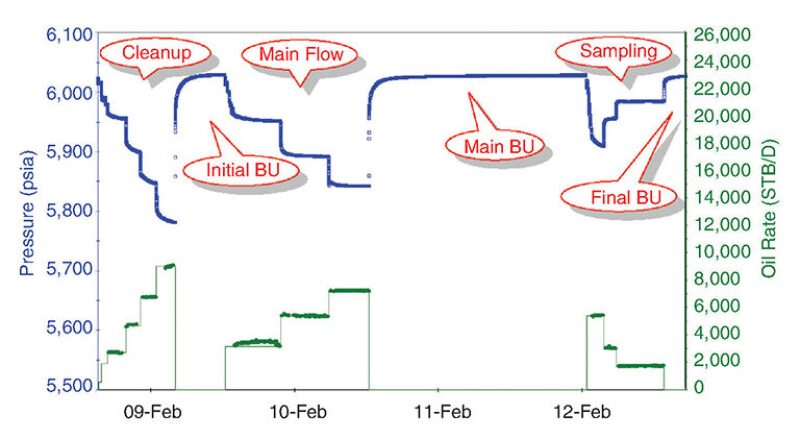This work presents a real field example in which the integration of well-testing and geological interpretations increased the understanding of a complex, heterogeneous reservoir. An integrated study of both dynamic well-testing data and geological/seismic models was conducted to assess a very complex pressure response obtained from a production test conducted in an offshore oil well. The well-testing objectives were to improve reservoir characterization and to quantify the well productivity in a high-permeability oil-bearing sandstone formation.
Introduction
The target of the production test [drillstem test (DST)] is considered one of the more important reservoirs for the development of a field asset located in ultradeep water. Both the dimensions involved and the average petrophysical properties are expected to sustain quite good production performance.
A dedicated test giving good and reliable interpreted results was considered essential to assess the expectations concerning the reservoir productivity and extent, thus confirming the viability of the development project.
The DST addressed the general main well-testing objectives: the acquisition of representative reservoir-fluid samples (at surface and downhole); the estimation of formation pressure and temperature, average permeability, and well damage; the assessment of well productivity; and the detection of late-time effects (i.e., any presence of heterogeneities or permeability barriers within the radius investigated by the test with respect to the current geological/seismic environment).
The bottomhole data were acquired by a real-time acquisition system throughout the well testing to achieve an effective balance between the value of information and the optimization of the rig time and costs.


